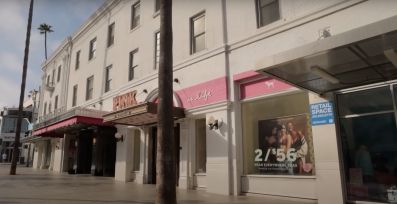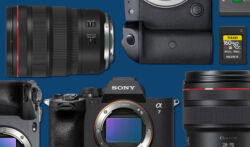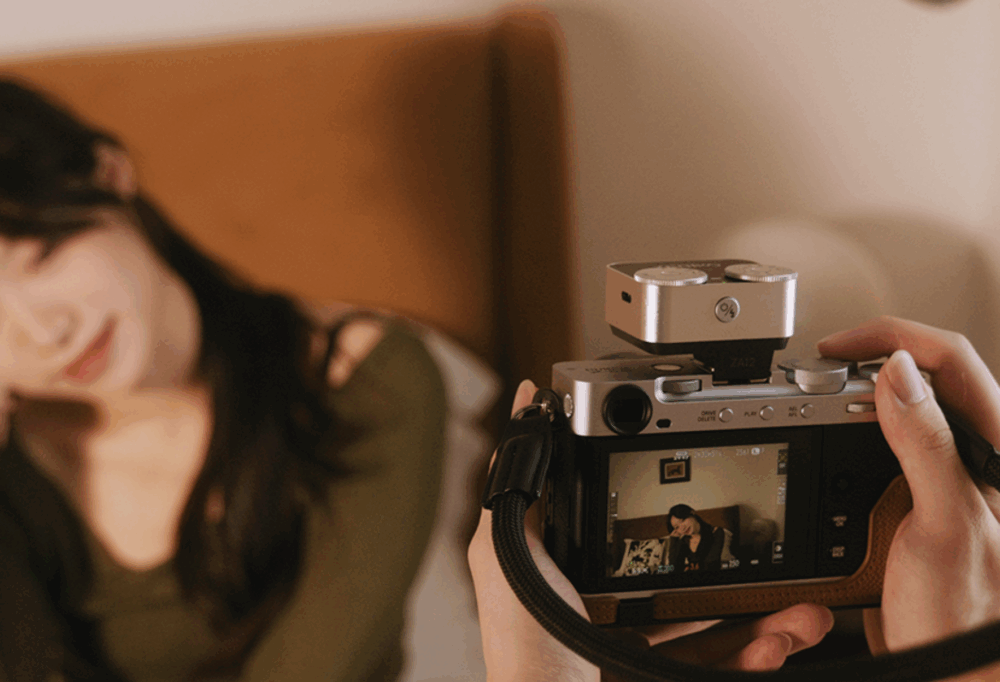(Purchase the Rokinon 16mm f/2 at B&H for $479)
 (Click here to view a larger version!)
(Click here to view a larger version!)
The Rokinon 16mm f/2 is a very special lens because it is one of the first wide-angle fast-aperture primes ever made specifically for APS-C crop-sensor DSLR cameras.
Until now, if you wanted a lens faster than f/2.8 and wider than ~35mm, your only options were the expensive 24mm full-frame primes, used on full-frame cameras. Eventually, Rokinon / Bower etc. entered that full-frame market with surprisingly sharp 24mm f/1.4’s of their own. Now, finally, we have a crop-sensor option too! (16mm on a crop-sensor camera roughly equals the 24mm field of view on full-frame)
Next I get to quote something I said in our recent Sigma 18-35mm f/1.8 lens review, because it applies here as well: If a lens is the very first to accomplish something, that isn’t necessarily a good thing. Often times in an uncrowded market with no competition, the pioneers are only of “passable” quality. How then does the Rokinon 16mm f/2 measure up? Incredibly well, actually.
Verdict
- Construction
Like all previous Rokinon lenses, it feels well-constructed and rock-solid. The focus is buttery smooth, a delight to use for anyone who enjoys manual focus, such as nature photographers or videographers.
However as with all of these “generic brand” affordable lenses, you probably still want to take great care of it. Overall construction may be great, but if you rattle it around in a pelican case for a year, or if you like to drive really fast over washboard roads on your wilderness adventures, you need to keep an eye on the integrity of the internal optics. This goes for any lens, of course, but just slightly more with this affordable crowd. - Sharpness
It’s perfectly sharp wide open, almost completely to the extreme corners. It effortlessly resolved the full potential of the Nikon D7100, which is a 24 megapixel DX sensor that has no low-pass (AA) filter! Impressive, indeed. From f/2 to f/16, edge-to-edge sharpness is just astonishing. (I normally wouldn’t shoot at f/16 on a crop sensor, for fear of diffraction, however there was something about the Nikon D7100’s sensor with the Rokinon that seemed to still render incredible detail to this usually “taboo” range.)
The very extreme corners are soft wide open though, but only in the very last few pixels. (This means you would essentially have corner-to-corner sharpness if you were shooting 16:9 video) Stopping down helps to sharpen corners, but they don’t get as sharp as the dead-center of the frame until about f/8 or so. Mostly just because the dead-center is so razor sharp, though!

- Vignetting
Here comes the slight bad news. Vignetting is tough to gauge on the Rokinon 16mm, and here’s why: Either the lens vignettes so bad wide open that it affects almost the entire image frame, OR there is almost no vignetting whatsoever and the lens is actually f/2.2 or something. I’m guessing small parts of both… Thankfully for nightscape / star photographers, this almost becomes a non-issue because the image brightness is so even center-to-corner, it looks fantastic once you get your exposure right! You just might need to bump things up by 1/3 of a stop if you plan on shooting a night sky wide open at f/2. (Un-processed image, to show vignetting @ f/2)
(Un-processed image, to show vignetting @ f/2) - Distortion
Not bad, and as soon as Adobe etc. get a chance to build a profile for this lens, it will be a non-issue in our opinion. - Chromatic Aberrations
Once again, extremely low to begin with and a non-issue with Adobe’s incredible tools for removing CA. - Flare & Sunstars
Now we get to the things that are NOT easy to correct with a profile etc. Flare is, thankfully, pretty well controlled. You can achieve that pretty type of flare if you want to, but if for example you’re a landscape photographer who sometimes composes image with the bright lights near / in the frame, rest assured that this lens renders very few of those pesky colored dots. Also, sunstars are beautiful thanks to Rokinon’s usual aperture blade design… - Macro
You usually wouldn’t think about using a wide angle lens for macro, however the Rokinon can focus quite close, and has incredible sharpness even at that focus distance. (Many wide angle lenses’ sharpness “falls apart” when you get too close to something)

- Coma
Last but not least, we get to the one thing that star / night photographers care about a whole bunch: Even wide open, the Rokinon has almost none of that common “wings of flare” type coma that you see on most fast / wide lenses. It does seem to still render stars and other points of light in a slightly “stretched” manner, however it is far more pleasing than any other type of coma we have ever seen, including the Sigma 18-35mm f/1.8.
Who Should Buy It
As awesome as it is, this is definitely still a specialty lens. It’s manual focus, and it’s made for crop sensors. Who should buy it? Primarily, two people: Landscape / nightscape photographers, and videographers.
Landscape photographers who are concerned with image quality but want a lighter, smaller package than a full-frame alternative will love the Rokinon on a Nikon D7100 or Canon 70D, for example. You could even use these lenses on a Canon Rebel or a Nikon D5200 / 3200, if you’re a hobbyist traveler who is extremely concerned about weight. That is the beauty of crop sensor systems; you have extremely lightweight and compact options as well as the more hefty, semi-pro options.
Compared to a Nikon D600 and a Rokionon 24mm f/1.4, the 16mm f/2 on an average crop sensor camera could weigh at least a half-pound less, and costs easily $1,000 less, all while offering equal or better overall image quality! (And as soon as you start considering other, name-brand options and alternatives such as the Nikon 24mm f/1.4 on a D800, you’re looking at a HUGE difference in price and weight!)
Even if you value image quality more than portability, the 16mm f/2 still gives its 24mm f/1.4 brethren quite a run for their money. In fact personally as someone who does enjoy traveling and hiking where portability are essential, I would choose the 16mm any day for both general landscape photography and even nightscapes and star trails. The sharpness and overall image quality is that good!
Videography Use
Videographers can always use more light, and for the most part don’t care about autofocus, so the Rokinon 16mm is a great choice with it’s biting sharpness and buttery-smooth focus ring. The focus also has quite a lot of “throw”, which allows for very precise adjustments and smooth pulls. Of course Rokinon does also offer “Cine” lenses, which you can find HERE.
Other Uses
Certainly there are a few portrait photographers out there who don’t mind manual focus, or general hobbyists who enjoy the fun and creativity of such a lens. However other than those few cases, (these people usually already know whether or not they can handle a lens like this!) …we do feel that most casual photographers would be better off with an autofocus zoom lens in this wide-angle range for crop sensors. But we’ll get to that in a minute. Does this mean that you shouldn’t use the Rokinon 16mm f/2 for your particular passion in photography? Absolutely not, we are just making our recommendations to the majority of photographers.
While timelapse photography sort of falls into both of the above main categories, (nightscapes and videography) …it bears mentioning that if you’re into timelapse photography you’ll probably love this lens. Here is a quick sample from our recent Arrowhead adventure during the Perseid Meteor Shower.
Versus Other Lens Options
We’ve basically already said all there is to say regarding how this lens performs against its competition, but in case you’re interested let’s still consider:
- If you don’t care about fast apertures or smooth manual focus, and you’re just a general photographer looking for a sharp lens, then instead you should probably consider a zoom lens that either covers this range, or starts at it.
- For example the Nikon 16-85mm f/3.5-5.6 DX is an incredibly sharp, lightweight zoom that is much loved by outdoor / travel photographers.
- Or, dedicated wide-angle zooms like the Sigma 10-20mm f/4-5.6 and the Tokina 11-16mm f/2.8 are proven to be incredibly sharp and well-built, with once again a much more versatile zoom range if you are willing to compromise on the aperture, and plan on stopping down most of the time.
- If full-frame cameras and lenses are an option for you, then you’ll have to also consider the FX equivalents to the Rokinon 16mm. Basically Canon and Nikon both make 24mm f/1.4 lenses, but both are over $1,000 more expensive than the Rokinon.
- Of course Samyang / Rokinon / Bower also make a 24mm f/1.4 of their own, and it is only $70-$150 more expensive than the 16mm f/2. (depending on which one you buy) For that modest price increase you gain access to f/1.4, and of course the better high ISO performance that full-frame sensors provide. However the Rokionon 16mm f/2 seems to be noticeably sharper wide open than the Rokinon 24mm f/1.4 stopped down to f/2, so it’s a toss-up. If you are truly a low-light junkie and you just absolutely need f/1.4 and super-clean ISO 6400+, then full-frame is still your best bet. However if you can live with the crop sensor and f/2.0 instead of f/1.4, the 16mm does deliver superb overall image quality that matches and surpasses the quality of any alternative.
So, there you have it folks! We’re happy to highly recommend this lens, not just because it is the only one of it’s kind, but because it is actually incredibly good at doing what it is designed for!
 5 stars, for anybody who is serious about nightscape photography or videography.
5 stars, for anybody who is serious about nightscape photography or videography.
 4 stars, for regular photographers who have a general interest in low-light photography.
4 stars, for regular photographers who have a general interest in low-light photography.













